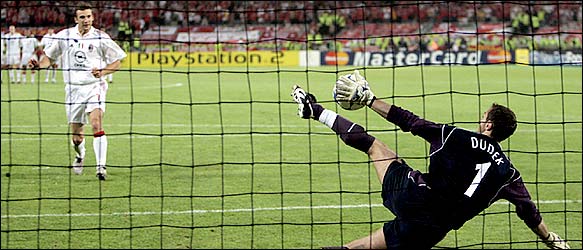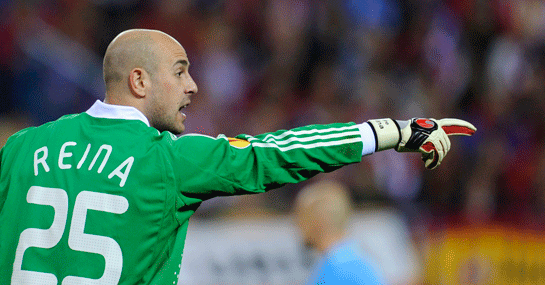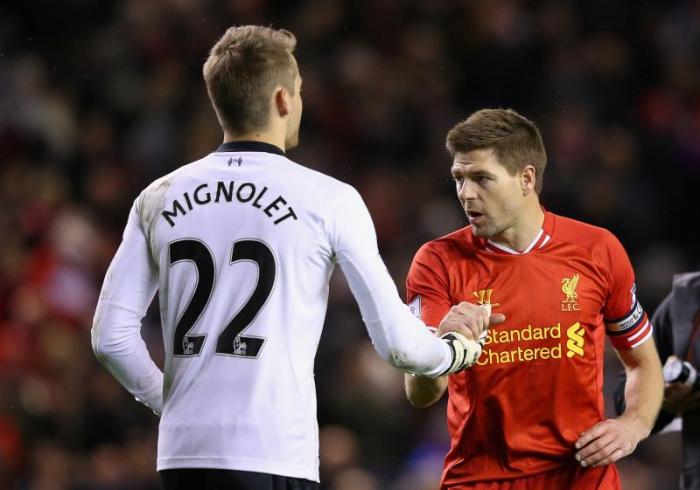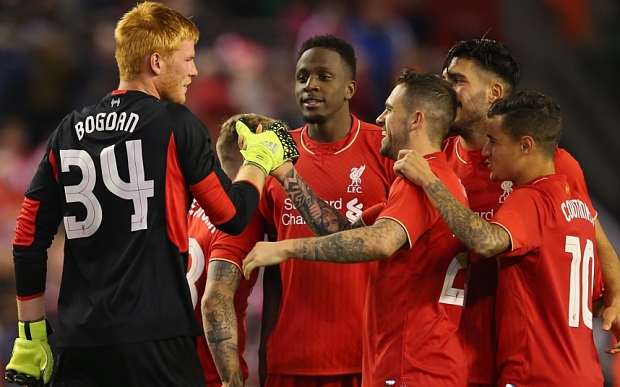
Let’s be honest, few goalkeepers could pull it off, or would even attempt it, but for some reason it doesn’t look horrific.
It certainly sits better with us than Emiliano Viviano wearing 2 for Sampdoria. That just seems like a reserve keeper’s number – in a ‘block’ numbering style, for instance – whereas 9 feels like a part of an alphabetical system, where anything can go.
As it happens, if Germany had gone alphabetical at the 2006 World Cup, Jens Lehmann would have worn 15 (with Gerald Asamoah number 1 and Oliver Kahn 11), but by that stage he had taken number 1 as he had usurped Kahn as the first-choice goalkeeper. How did he end wearing the most centre-forwardiest of numbers in goal? Well, the explanation is (unfortunately?) fairly straightforward.
Lehmann wore 12 when backing up Kahn in the 2005 Confederations Cup, but he missed the first friendly of the 2005-06 season, a 2-2 draw with the Netherlands. Klinsmann decided to assign permanent numbers for the season in that game and, as Kahn started, it was no surprised that he wore 1. Another Arsenal German, Per Mertesacker, wore 29, the number he had for both Hannover 96 and Werder Bremen before taking 4 at Arsenal.
For Germany’s next game, away to Slovakia, Lehman was back in the squad but, as Kahn was obviously 1, it meant that he had to pick a different number. Perhaps wanting to avoid being seen as the second-choice goalkeeper by wearing 12, he took the lowest available option, which was 9, though he joked that he’d have preferred 10 (see comments section for clarification on this, we initially thought that Timo Hildebrand had taken 12). In 05-06, he enjoyed the best season of his life, playing so well that Klinsmann installed him as first choice for the World Cup.
He could have kept 9 – FIFA’s rules stipulate that squads must be numbered 1-23 and 1 has to be worn by a goalkeeper at the World Cup, but beyond that there are no other regulations – but he wanted to conform. “I must speak to Klinsmann again,” he said. “I’d prefer to play in 1 rather than 9.” The manager acquiesced, with Kahn having to make do with 12.
Lehman shone wearing 1, performing heroics in the penalty shootout quarter-final win over Argentina, and he was named in the 23-man all-star team.
Incidentally, wearing 9 was one of only a few deviations away from 1 for Lehmann. When squad numbers were introduced in the Bundesliga in 1995, he was Schalke’s first choice and so was allocated 1. In 1998, he joined Milan and was given the number 16 but it was a short-lived spell, as he returned to Germany after a half a season, joining Borussia Dortmund.
Their goalkeeper, Stefan Klos, had joined Rangers on Christmas Eve, so 1 was for Lehmann and, when he signed for Arsenal in the summer of 2003, it was to replace David Season, who had just vacated 1 as well. After five years there, it was back to Germany again, this time to VfB Stuttgart and again number 1, with Rafael Schäfer having left after just a season.
Two seasons there looked to have wound down his career, but there was to be one last outing in an Arsenal shirt. While undertaking his coaching badges there, he was re-signed as emergency cover by Arsène Wenger due to injuries to Wojciech Szczesny, Lukasz Fabianski and Vito Mannone. It was still only intended that he would sit on the bench, but an injury to Manuel Almunia in the warm-up before Arsenal’s away game at Blackpool – a game featuring a far-from-ideal colour-clash – meant that Lehmann was called into action, wearing number 13.

























